Port of San Antonio, Chile, March 14, 2023
Another excursion day that Bill had to miss because his early morning test was still positive. Happily, Brenda was able to get out of Covid jail and join us for our time in the San Antonio and Valparaiso Chile region.
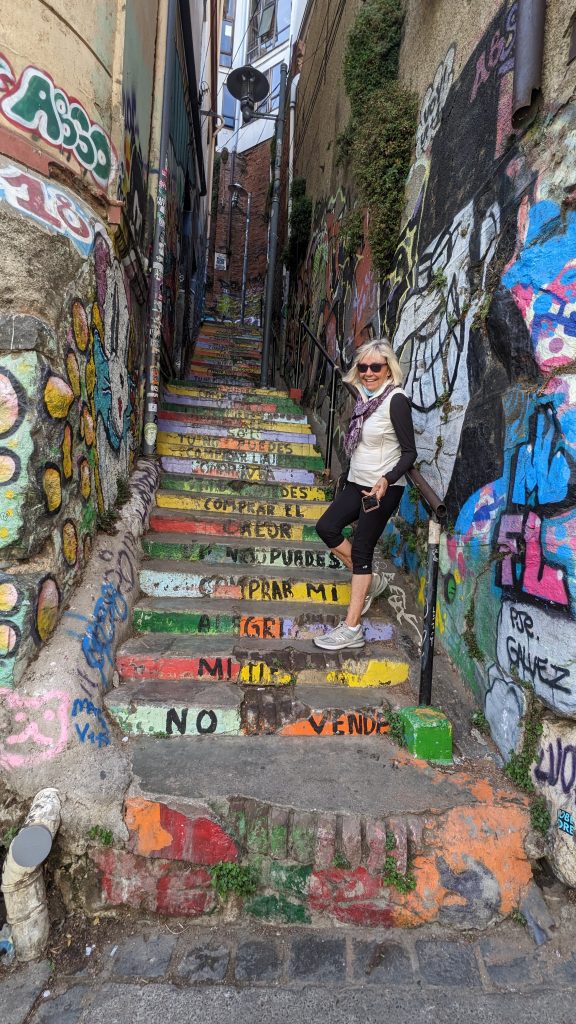
The boat docked in San Antonio, Chile where we joined fellow passenger Sandy on a private tour he had organized. There were about 14 of us on a small bus/van with very tight seats. Our guide was Sebastian, a local from Valparaiso. We did not spend any time in the port town, heading straight for the hillside town of Valparaiso which is about an hours drive, located in Central Chile. San Antonio is an industrial town and didn’t seem like there were many sights of interest to tourists.
Enroute to Valparaiso, we passed by Lo Vasquez Shrine, a sanctuary of the Catholic Church that celebrates the Immaculate Conception of the Virgin Mary each year in December. Thousands of people make the pilgrimage from Valparaiso and Santiago for the celebration, many walking along the highway which is often closed.
Our guide was not as well versed on the region’s history as previous guides or he wasn’t as talkative while we were driving. The town of Valparaiso is filled with ramshackle, brightly painted houses that spill chaotically down the many hills to the sea. It sits on the water but doesn’t really have any nice beaches. The town is known for it’s fifteen lifts called ascensores, or funiculars that are quite old and carry passengers to the higher points in the city.
Valparaíso city is the capital of Valparaíso region in central Chile. It lies on the south side of a broad, open bay of the Pacific Ocean, 84 miles (140 km) northwest of the national capital of Santiago.
The town was founded around the 1530’s but the exact date is unknown. In the early 19th century, after Chile received its independence from the Spanish monarchy, Valparaíso became more popular as it was an important spot on the routes connecting Europe with the Pacific coast through Cape Horn, for it had a port suitable for large vessels.
English, German, French and Yugoslavian immigrants, as well as the Spanish, began to land on the shores of this small great city. Many of these immigrants were quite successful and invested in the development of the city and in building their schools and churches and fine mansions on the hills. Alleys, staircases and funiculars were created to move about Valparaíso. The German influence is indicated by statue of Otto Von Bismarck in a plaza with his name.
The city had its zenith until the early 20th century, when it was hit by an earthquake in 1906 that almost completely destroyed it. When the Panamá Canal was opened, sea traffic was interrupted and the city began to decay. For its history, architecture and cultural diversity, UNESCO declared Valparaiso a “World Heritage City” in July 2003.
The lower part of the city looks like another shabby port city until you move to the upper city. The city doesn’t have a established date and had little city planning as it grew. There is not a main plaza like most other colonial cities. They still use mid 20th century electric streetcars (or trolleys) in the lower town. What was once an old prison has now been repurposed as cultural community center offering free classes and activities, similar to the one we saw in Buenos Aires. The city is the home of the Congress and has four universities, making it a young person’s city.
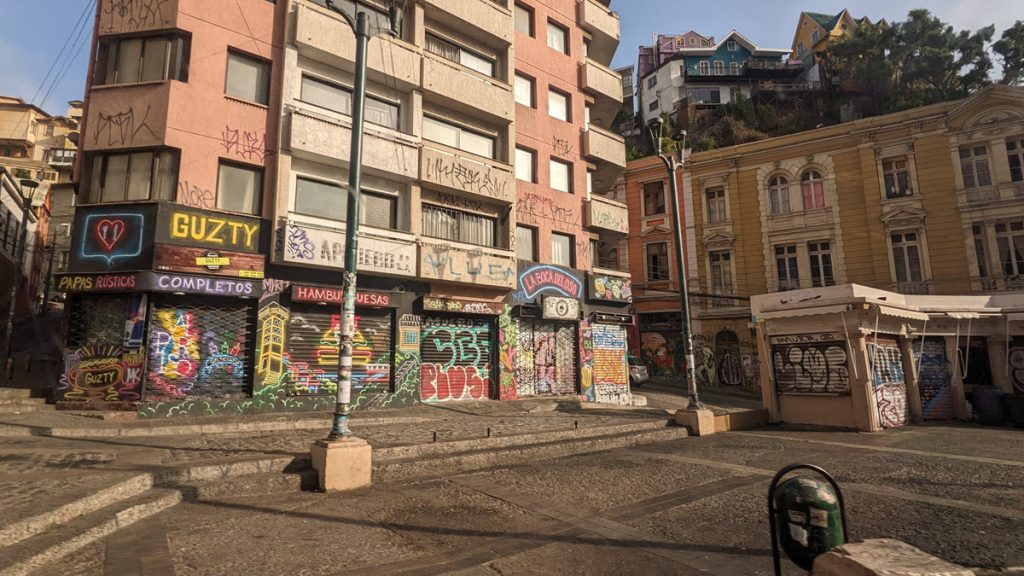
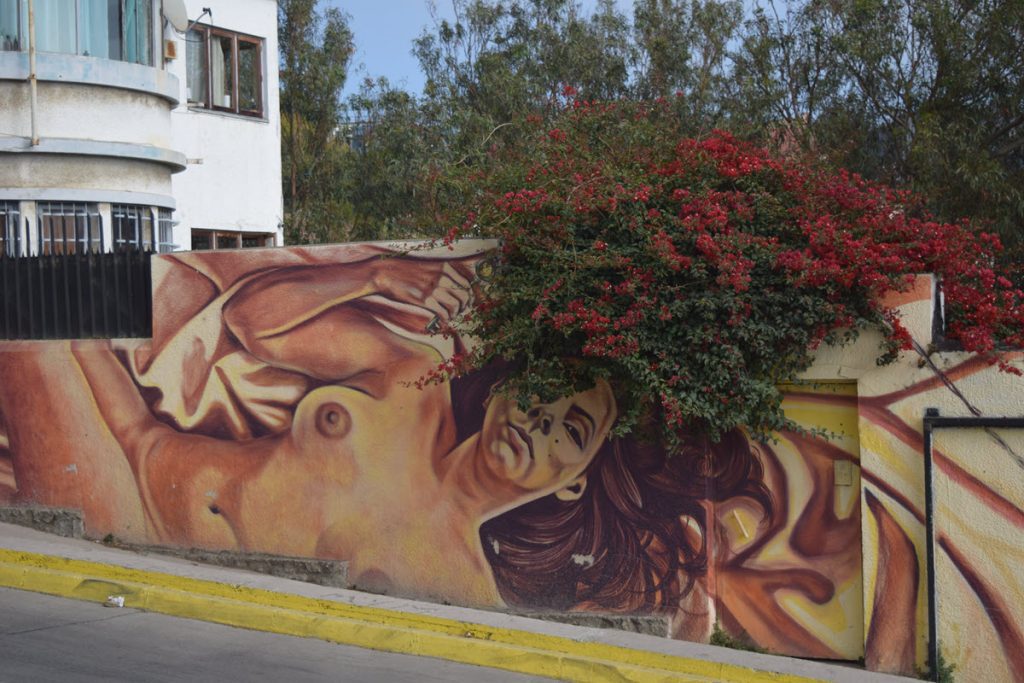
The upper city is what draws artists, bohemians and tourists. There we found historic mansions and colorful homes and shops on the winding narrow streets. The upper town is reminiscent of San Francisco of Chile, with its winding streets and many hills. Riding the funicular and traversing the raised pedestrian bridges made exploring the city by foot easier. Each neighborhood is named after the hill (cerra) that is built upon. There are more than 40 different hills and barrios.
The city was quite wealthy during the early decades of colonization but has faced challenges from earthquakes, fires, violence and piracy. The heyday of the city is long past and it is rundown now but is still a tourist destination. The city really isn’t about museums and sights. Instead our guide took us on a street mural tour through the winding labyrinth of streets ending with a short ride down a lift. Good art on the walls here is respected and does not get covered up for years, unlike our Grafitti Bridge in Pensacola which gets repainted daily. Typically the owner of the building will hire an artist to paint their facade which then prevents grafitti from getting sprayed.
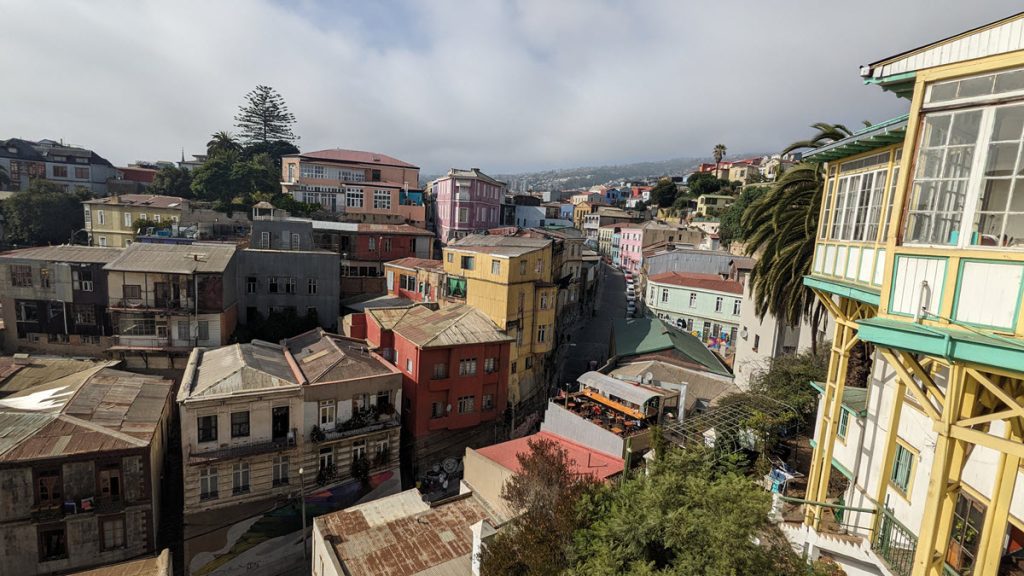
The town has a plaza named for Otto von Bismark of Germany.
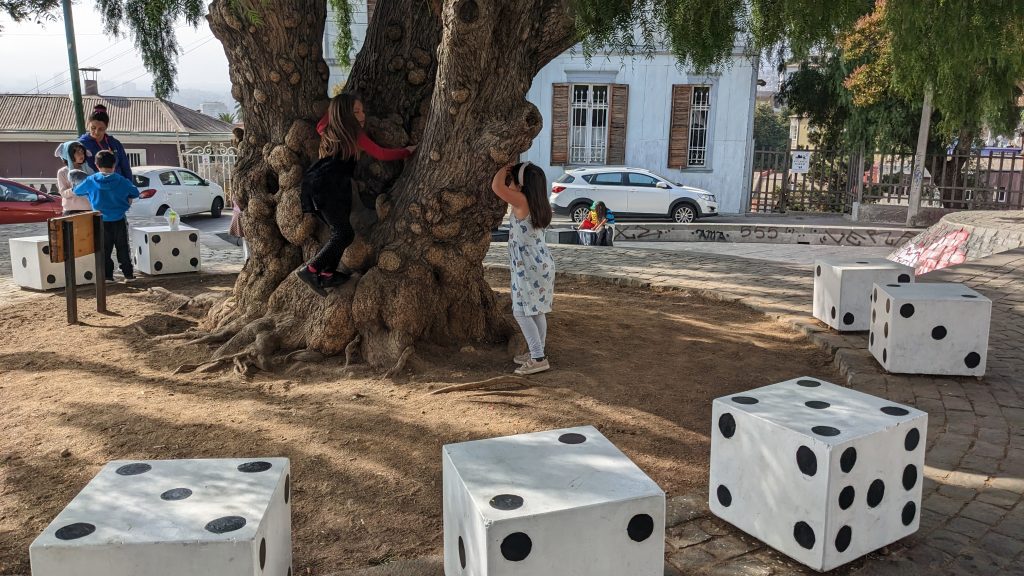
The real reason for this excursion was wine as we were traveling with some oenophiles from the US. Our destination was about 40 minutes away in the area of Casablanca which means “white house”. The area is delightfully undeveloped, green and fertile.We piled back into the bus to visit a winery in Casablanca which is the nearby wine region.
Vines were first planted in Casablanca in the mid-1980s during the revitalization of the Chilean wine industry and quickly became known for its white wines, most notably Sauvignon Blanc and Chardonnay, as well as Pinot Noir, which thrives in its cooler climate. Although the valley is located at 33°S, much closer to the Equator than any European vineyard, viticulture here is possible because of the cooling influence of the Pacific Ocean, in the shape of cool morning fog from the Humboldt current and greater cloud cover than is found elsewhere in the north of Chile. Casablanca claims to be one of the 10 best white wine regions in the world.
We arrived at the Villard Winery where we had a wine tasting followed by a very expensive lunch (by South American standards). We learned about why this region and its microclimates make for good red wines and tasted some excellent pinot noirs and syrahs. The winery was situated in a beautiful region between mountains with hundreds of acres of vineyards visible from the terrace. Some of the pinot grapes have not yet been picked and we drove out into the vineyard to take a closer look and taste a few. I bought a bottle of their higher end Pinot Noir and we plan to have a happy hour on the boat to enjoy it.
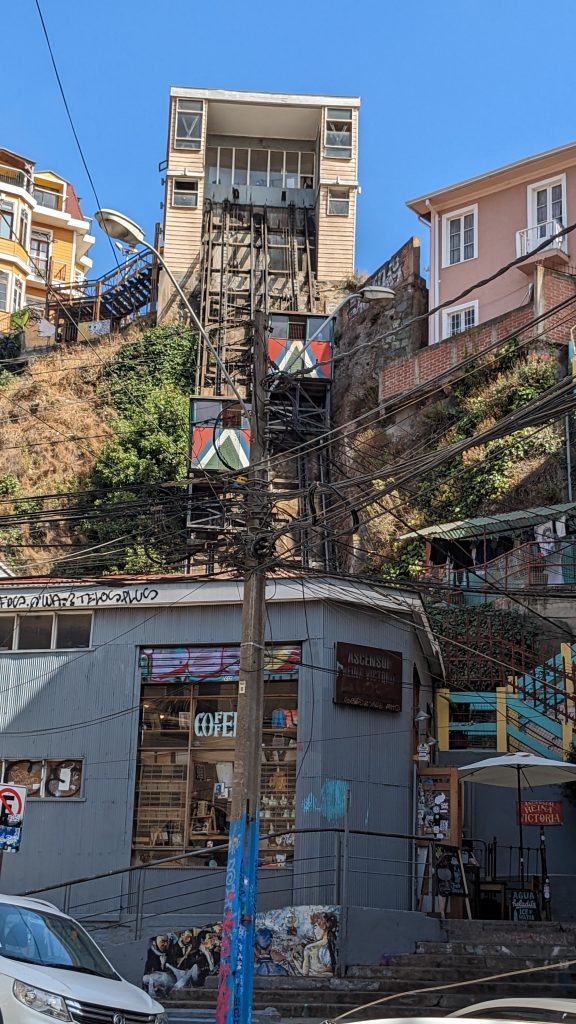
There wasn’t time to see anything else on this tour so we headed back to the boat. Craig was happy to find another basketball fan to share recollections of games gone by. And once again I was not able to find the perfect (or any) postcards for the kids in Chile. Those stamps are burning a hole in my pocket.
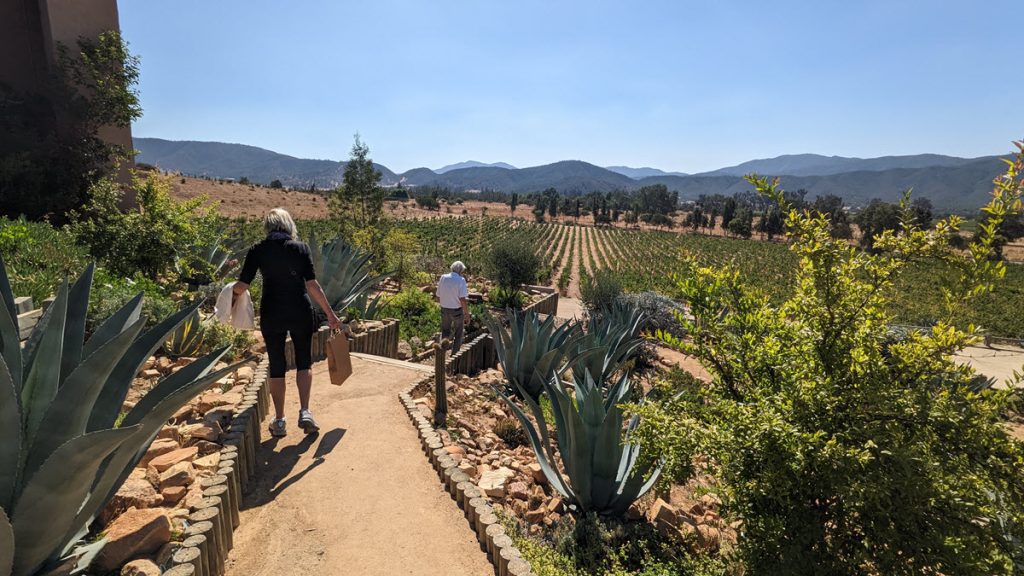
By the time I got back, Bill had gone to the doctors office and taken another test, feeling sure he was negative. We had reservations at Pollo steak house for dinner and headed over there anyways. It was okay but we left after an hour and watched the sunset from the hottub on the deck.
